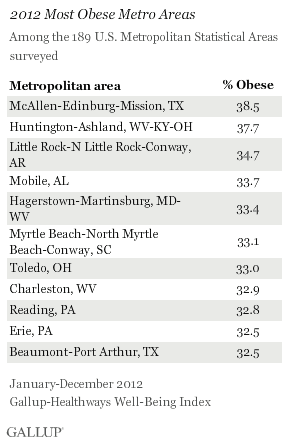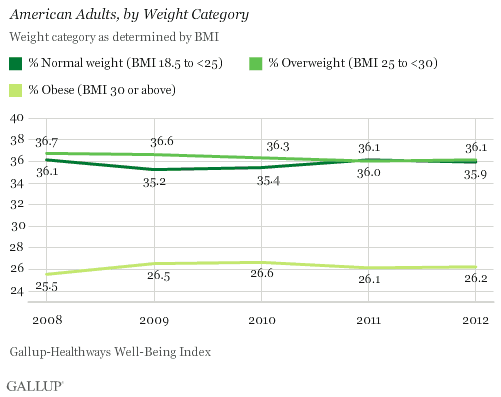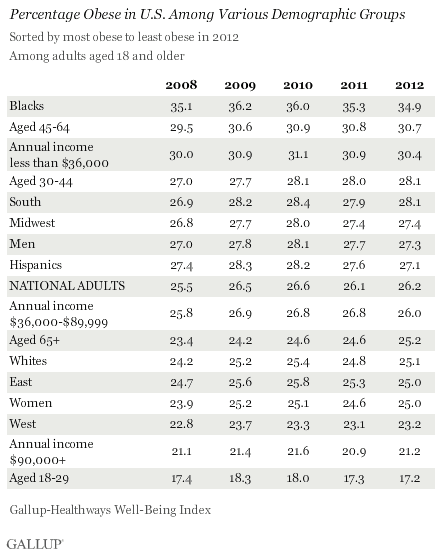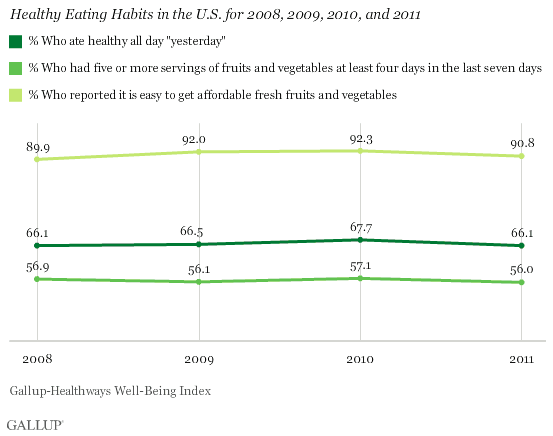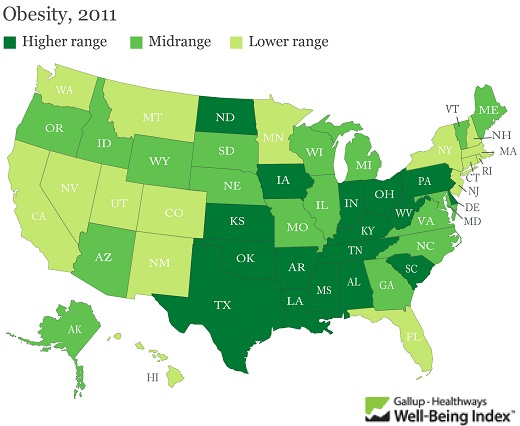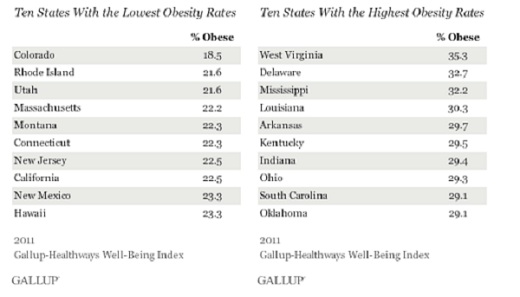Boulder Colorado Again Leads in Lower Obesity Rate
Posted onAccording to the latest Gallup Poll.
For the third consecutive year, residents of the Boulder, Colo., metro area are the least likely to be obese, at 12.5% in 2012. Residents of McAllen-Edinburg-Mission, Texas, continue to be the most likely to be obese, at 38.5%. Adult obesity rates are higher than 15% in all but two of the 189 metro areas that Gallup and Healthways surveyed in 2012.
Here is the chart for the worst areas for obesity.
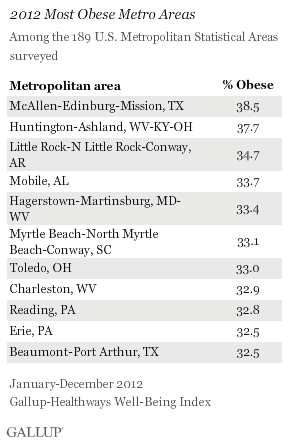 Obesity continues to be a problem in the United States and follows demographic trends.
Obesity continues to be a problem in the United States and follows demographic trends.
Nationwide, 26.2% of Americans aged 18 and older were obese in 2012, unchanged from 26.1% in 2011. Of the 189 reportable metro areas surveyed in 2012, 102 had obesity rates lower than the national average. Nineteen of the 25 most populous metro areas surveyed boasted obesity rates lower than the national average. Smaller metro areas were more likely to have above-average obesity rates, consistent with past reporting.
In the 11 metro areas with the highest obesity rates, the average annual wages are lower than in the 10 areas with the lowest obesity rates, reflecting the link between obesity and poverty. The average annual wage in the 11 areas with the highest obesity rates is $38,550, this compares with an average annual income of $47,783 for the 10 areas with the lowest obesity rates. Additionally, residents in the most obese areas, on average, earn $7,240 below the national mean wage of $45,790, while residents of the least obese areas average $1,993 more annually than the national mean wage.
Residents in the areas with the highest obesity rates are also 7.9 percentage points less likely than are those in the areas where obesity is lowest to have enough money to be able to buy food at all times. They are also 6.5 points less likely to have enough money for healthcare and medicine.


